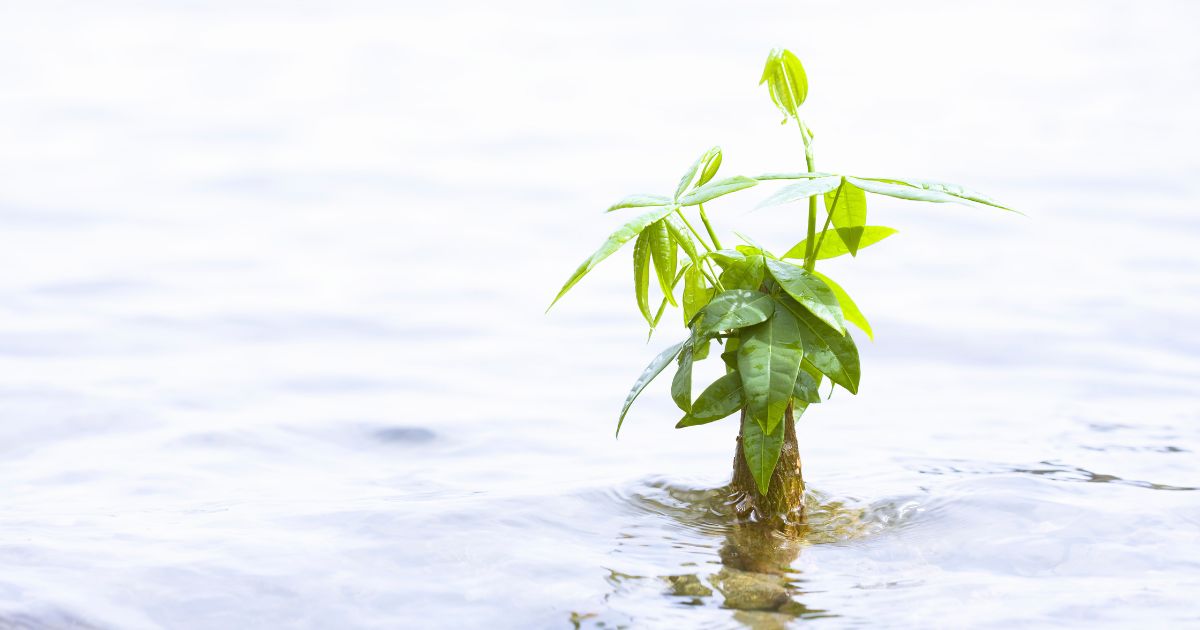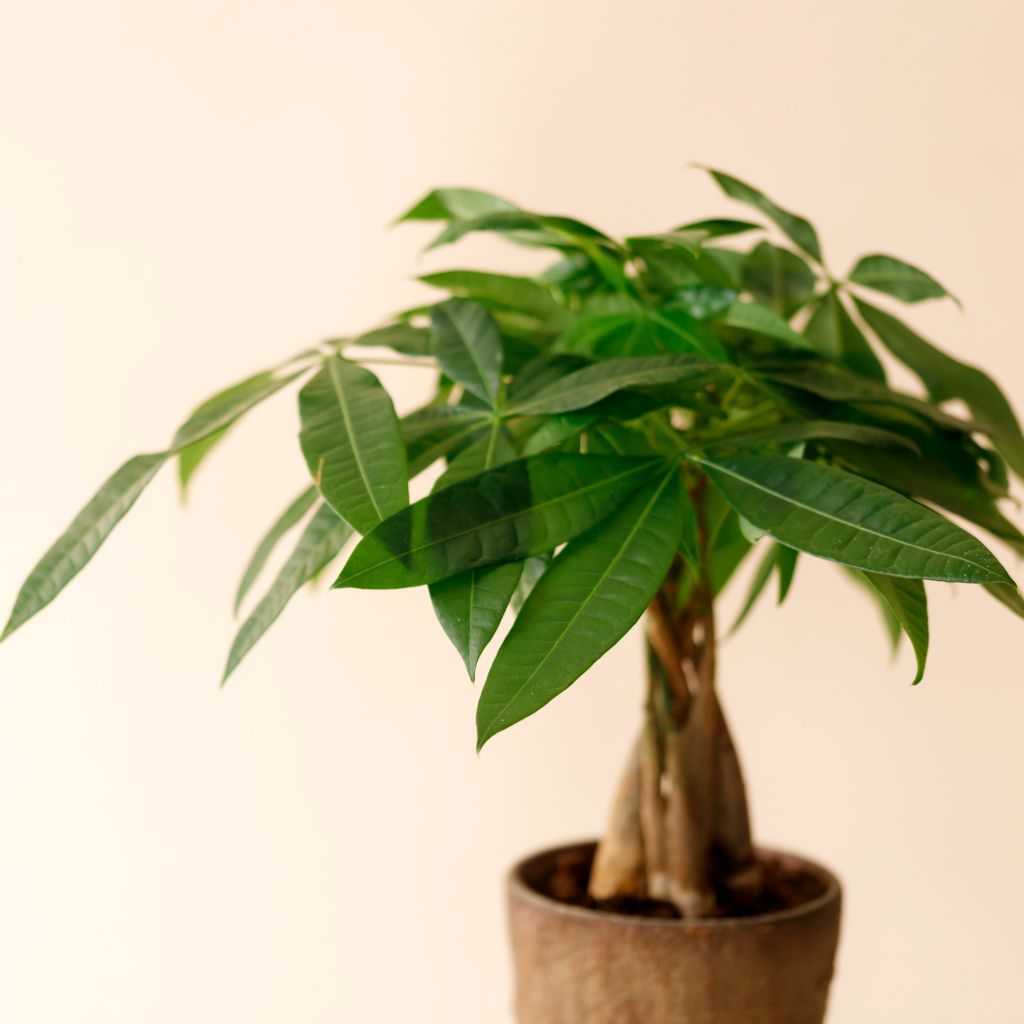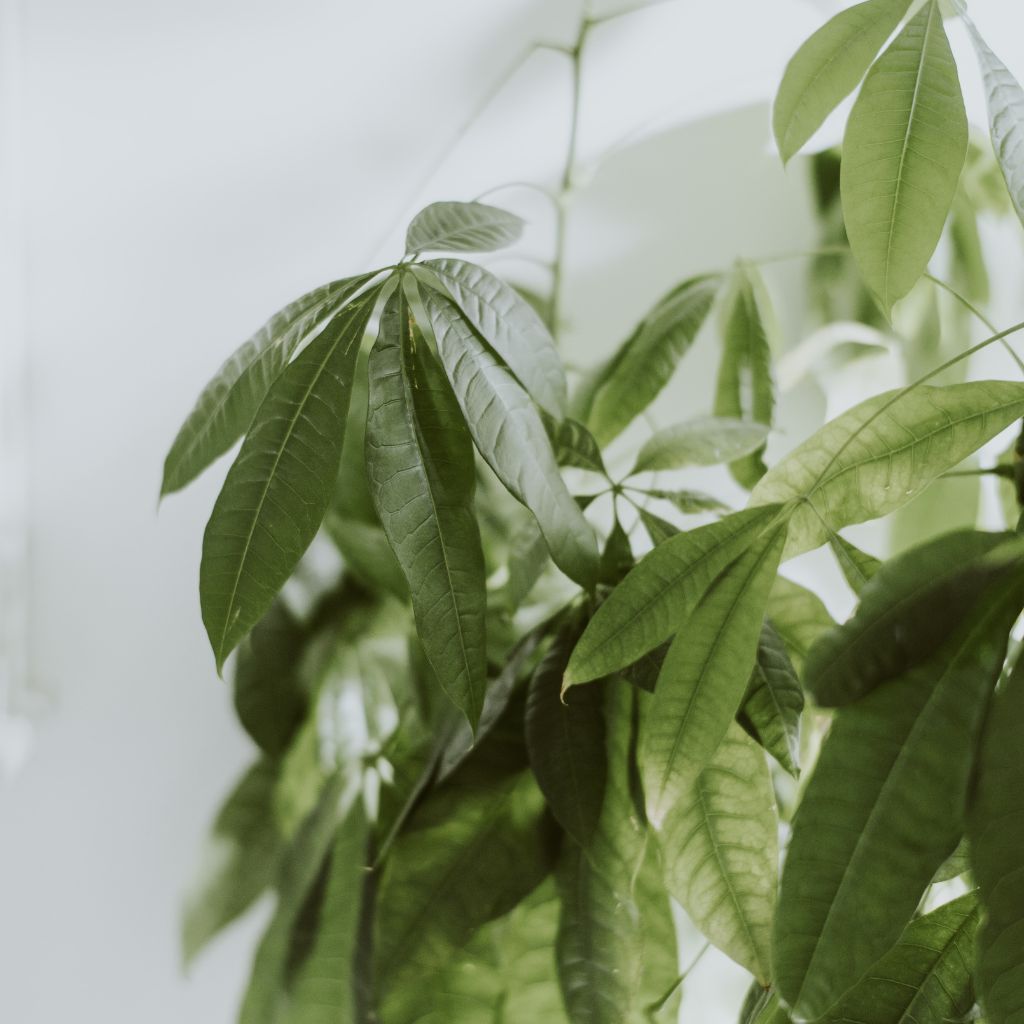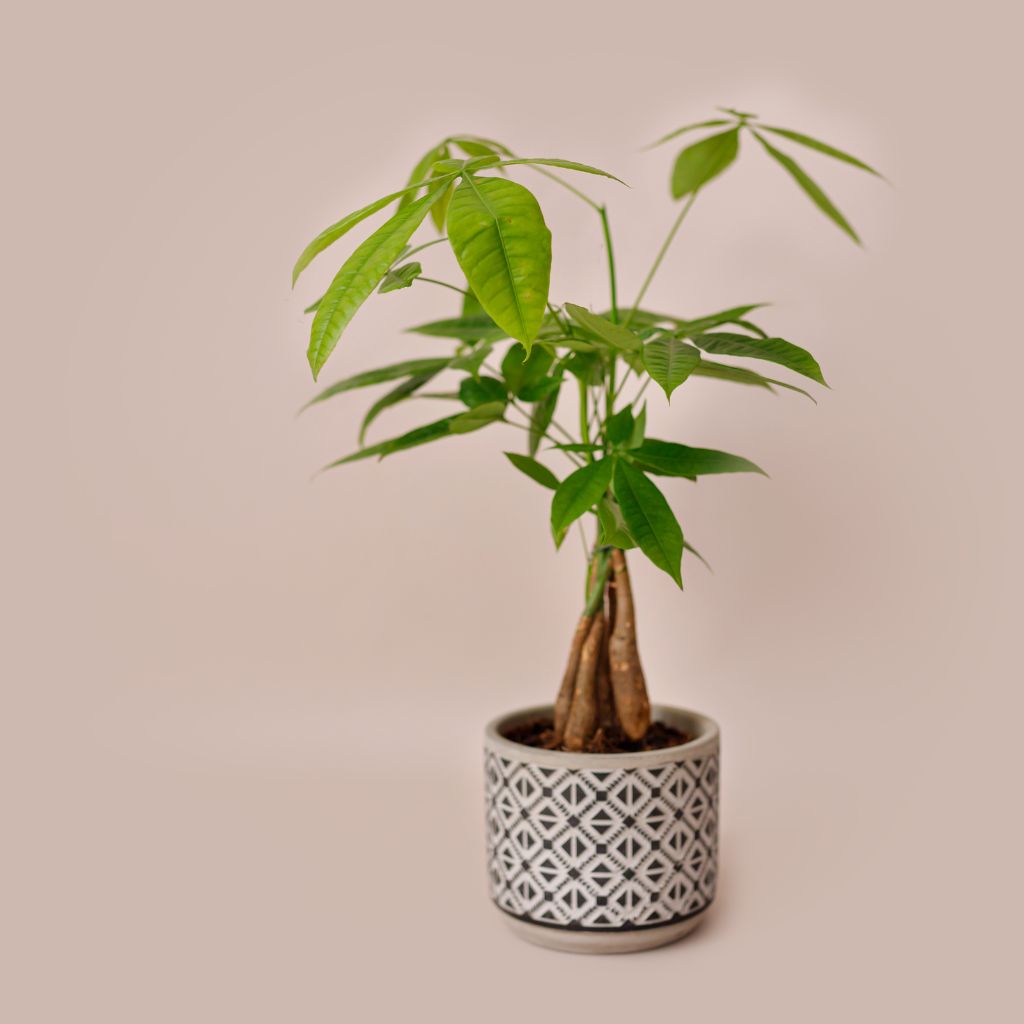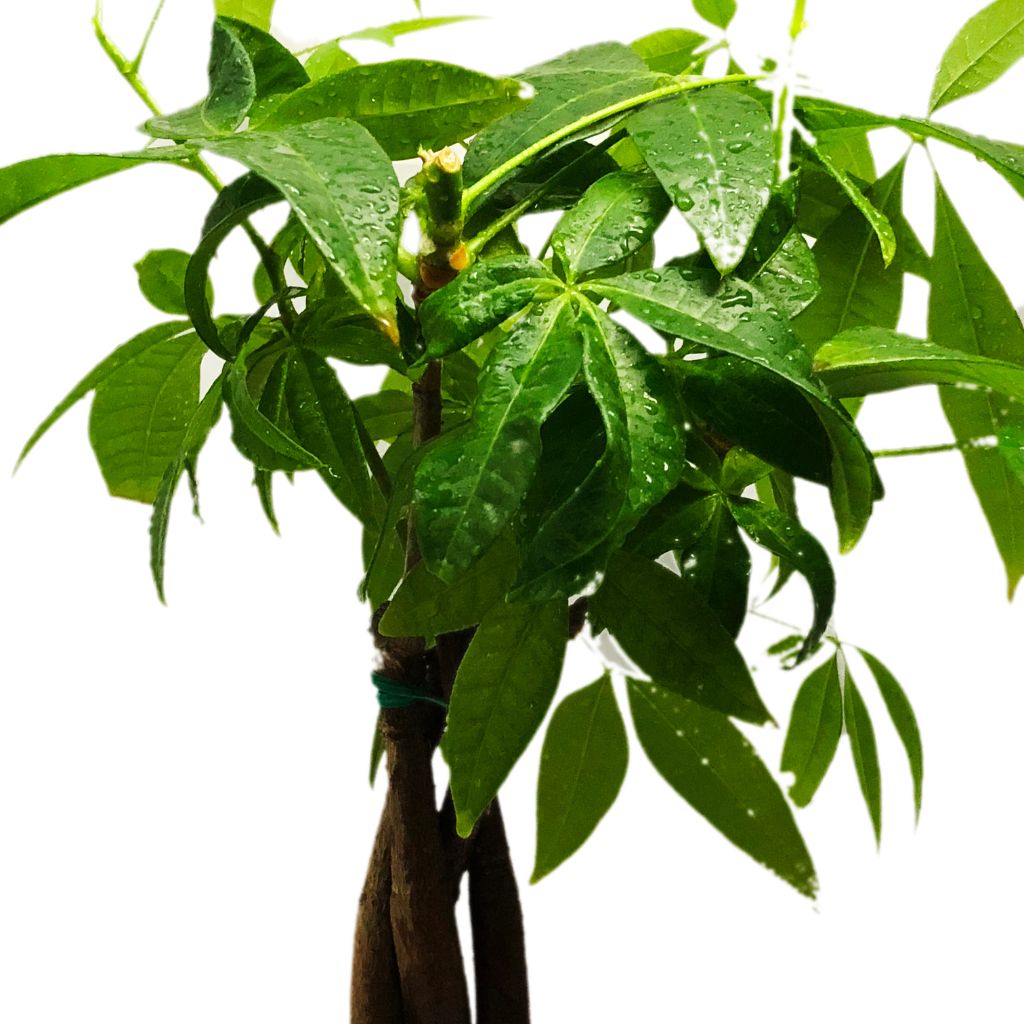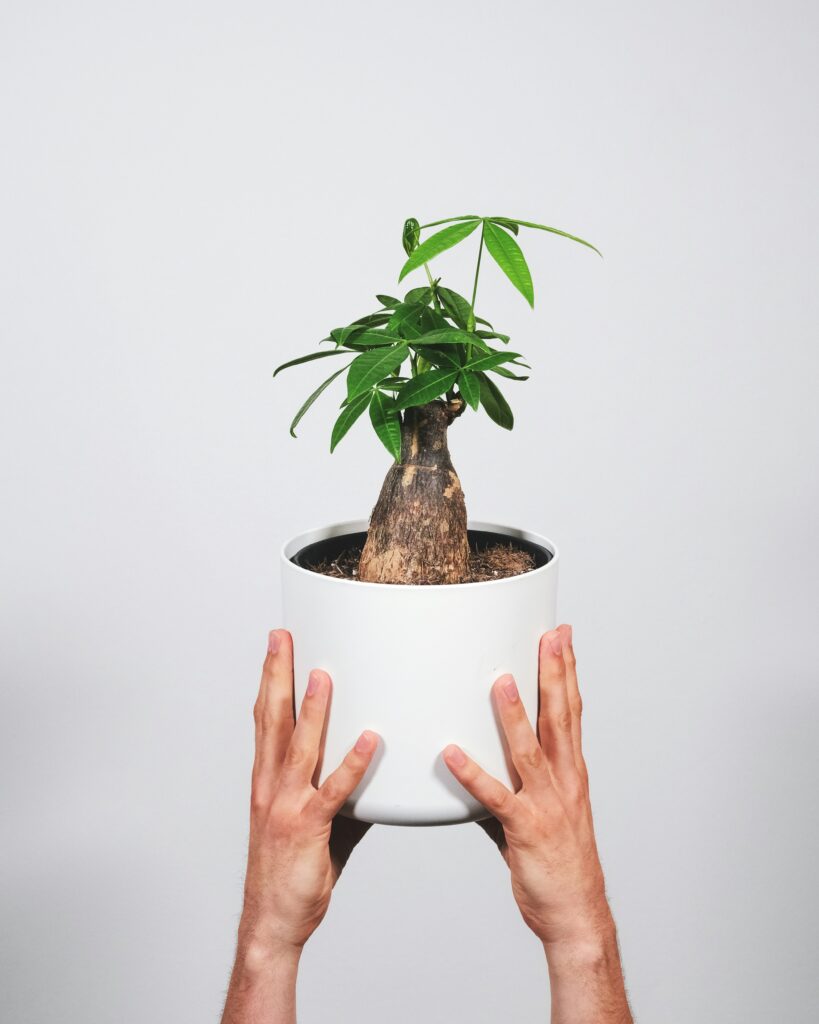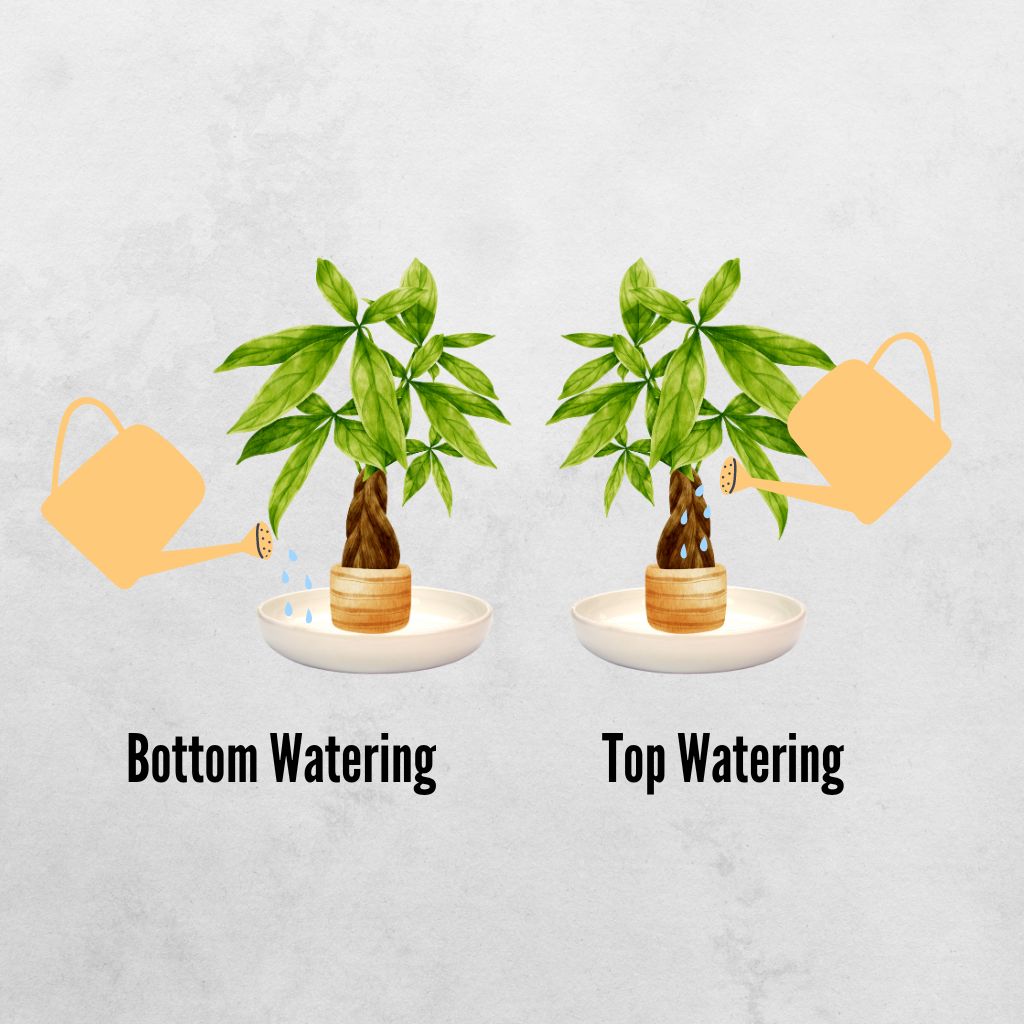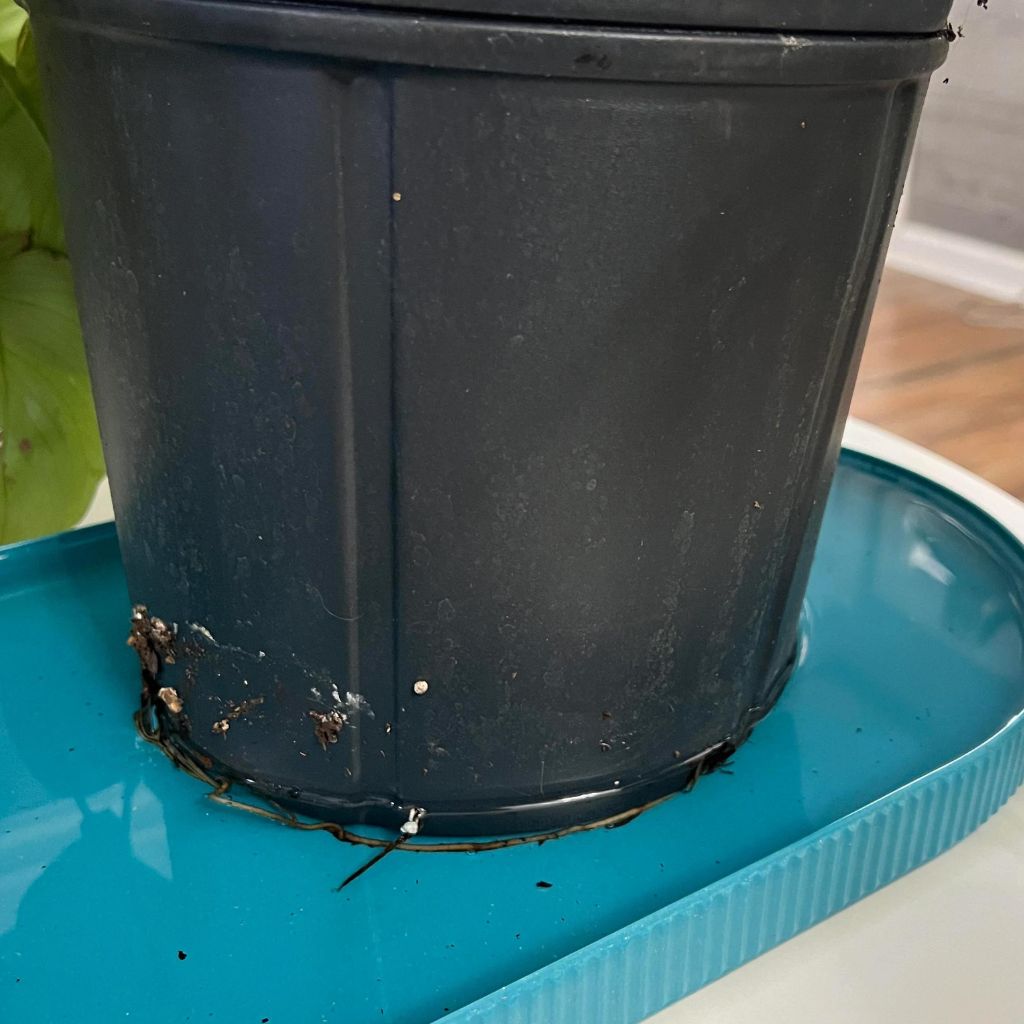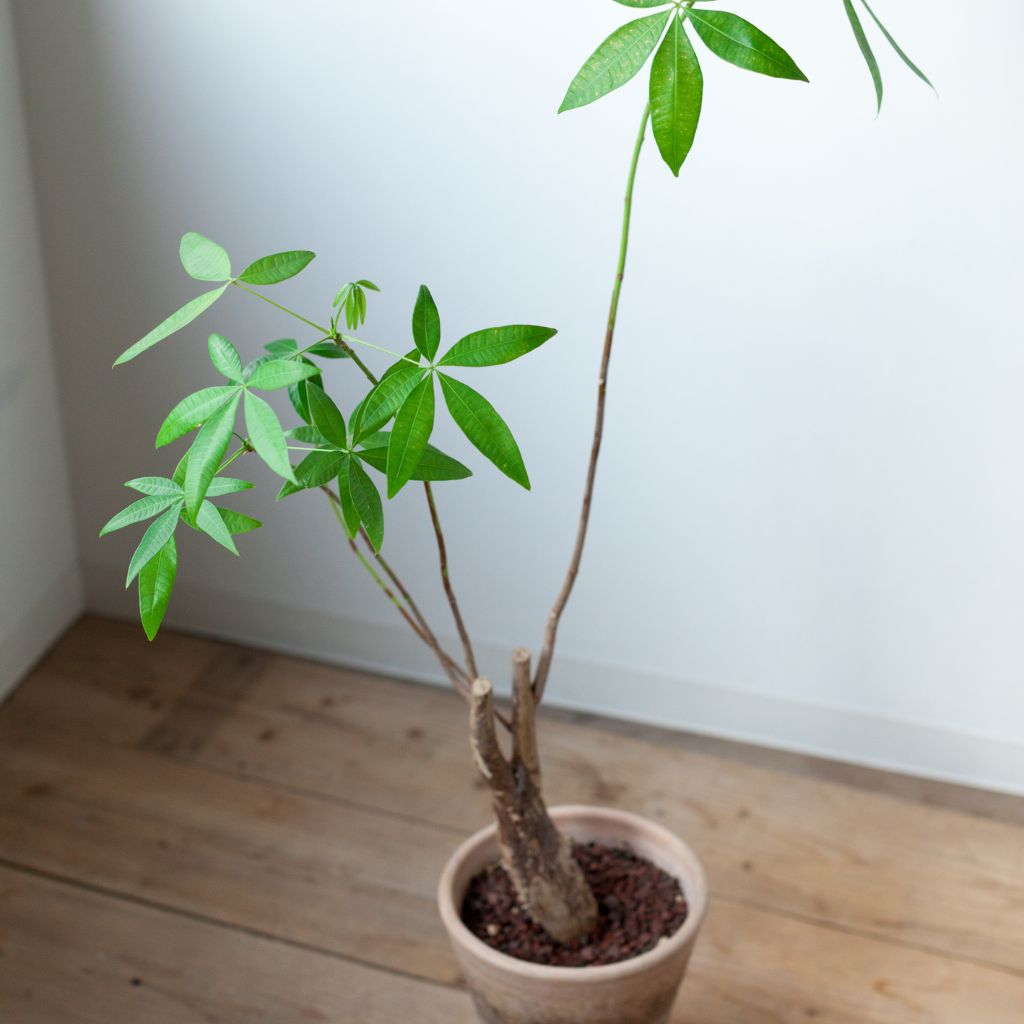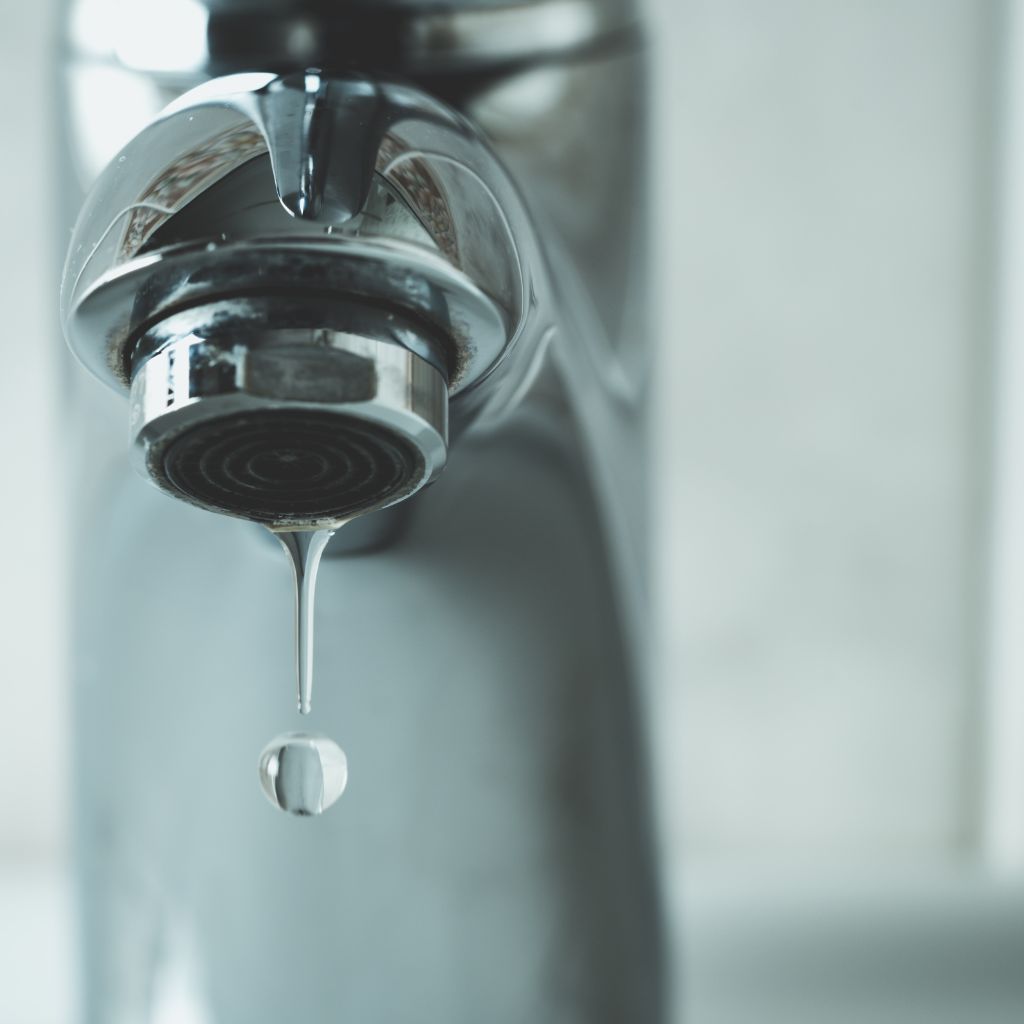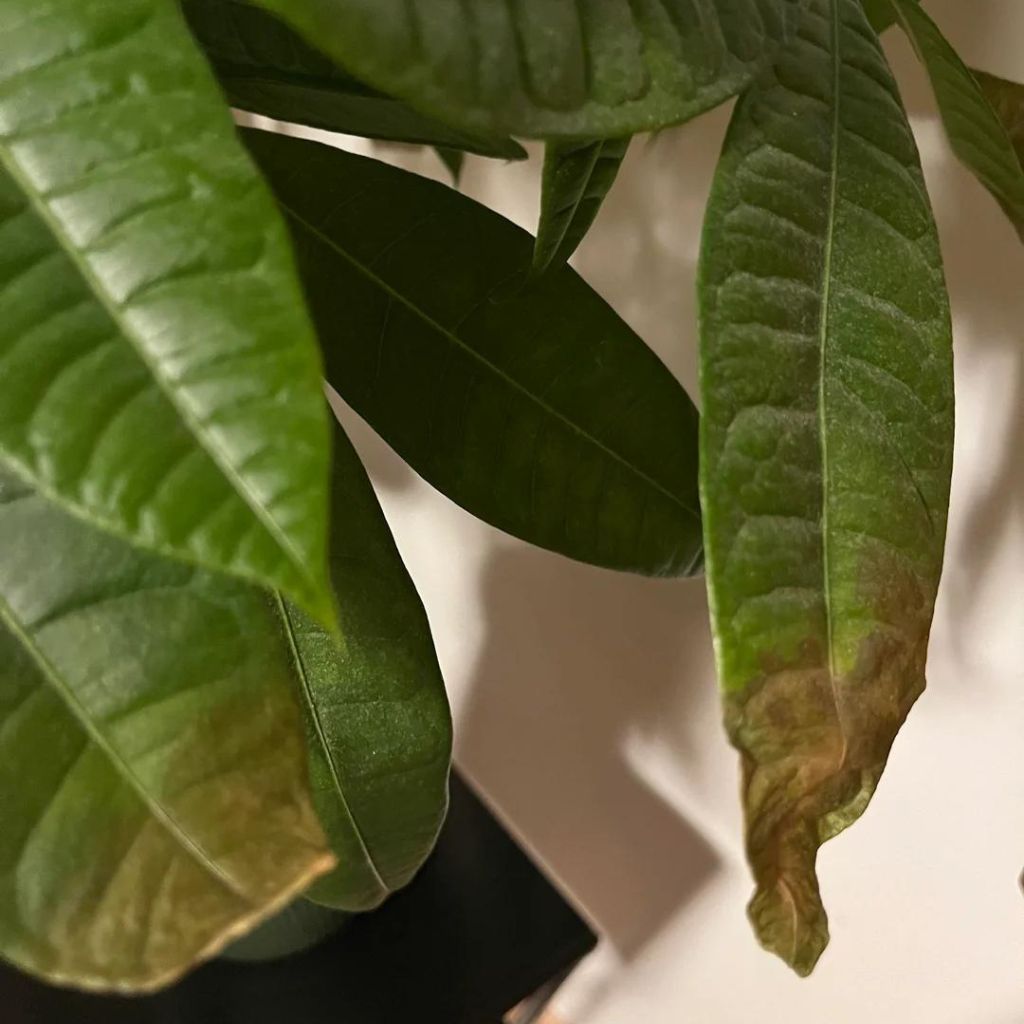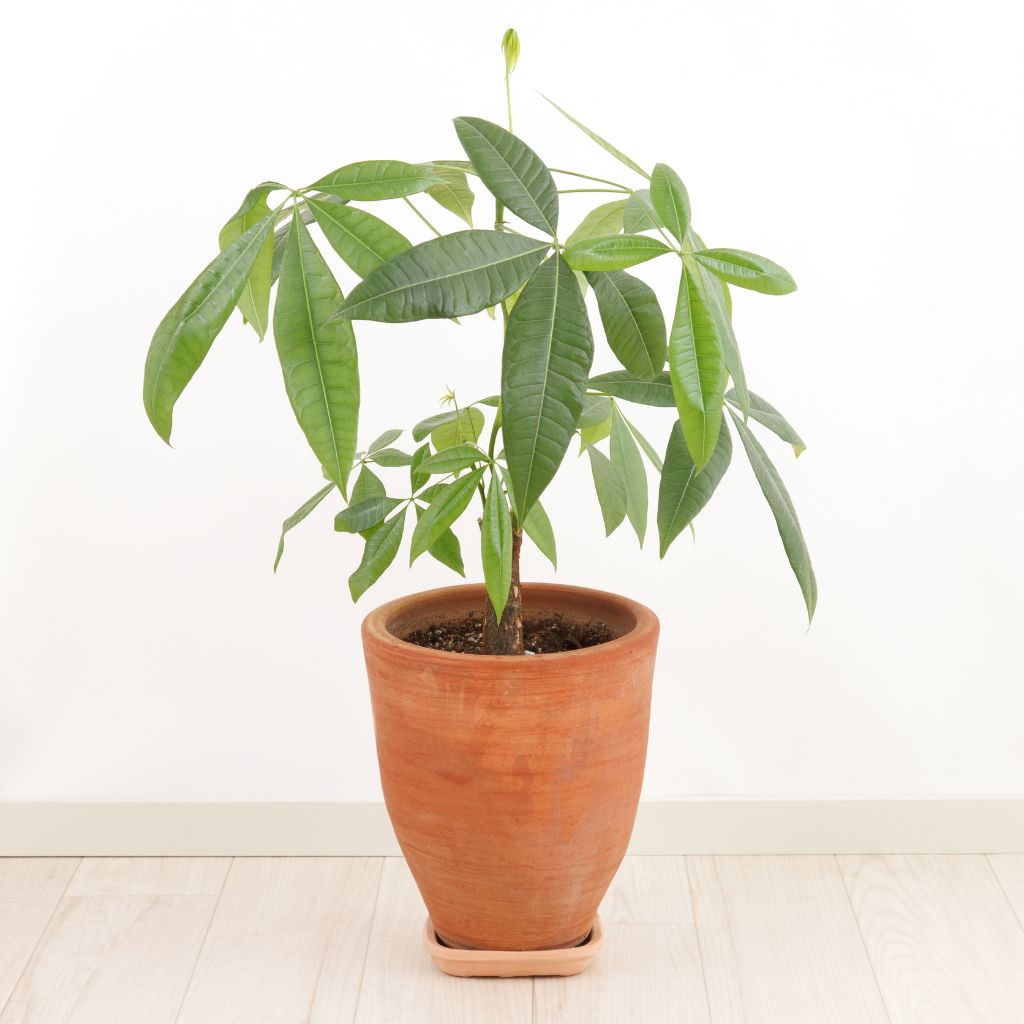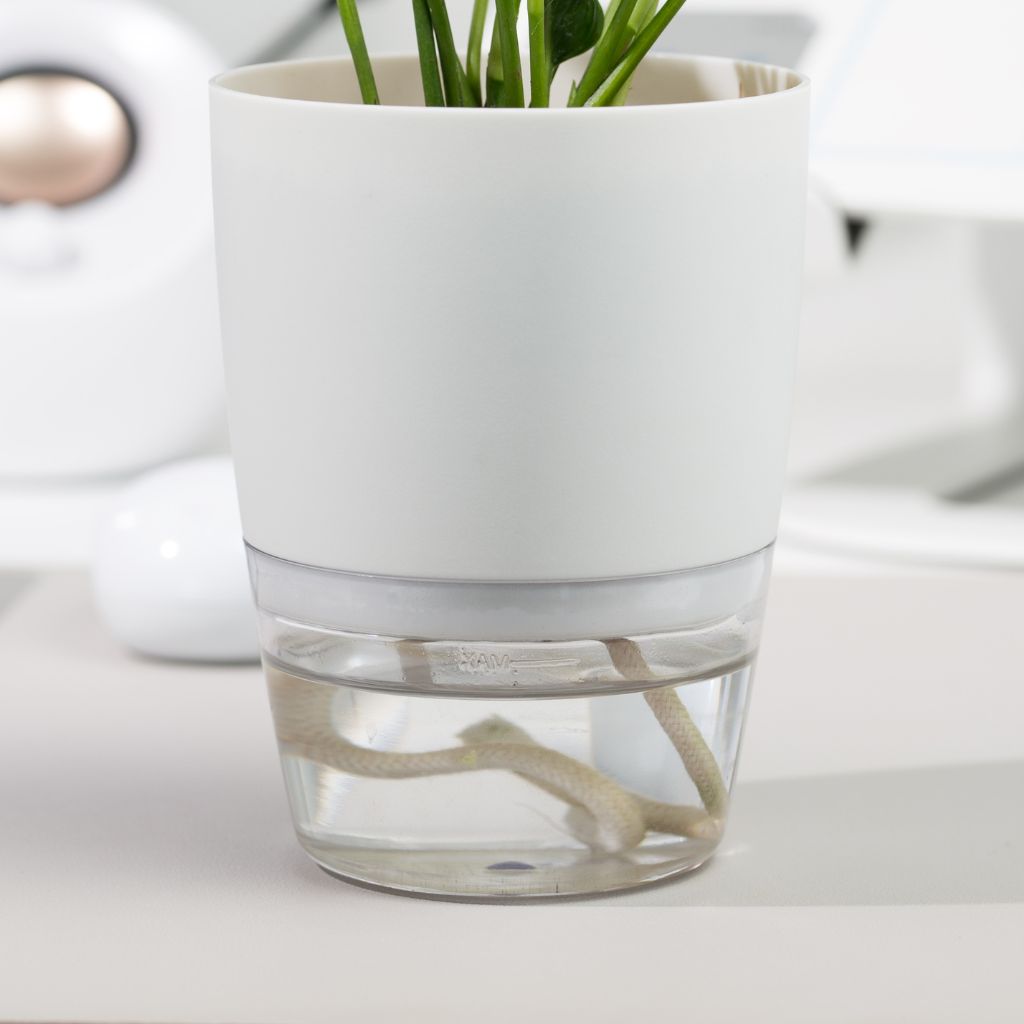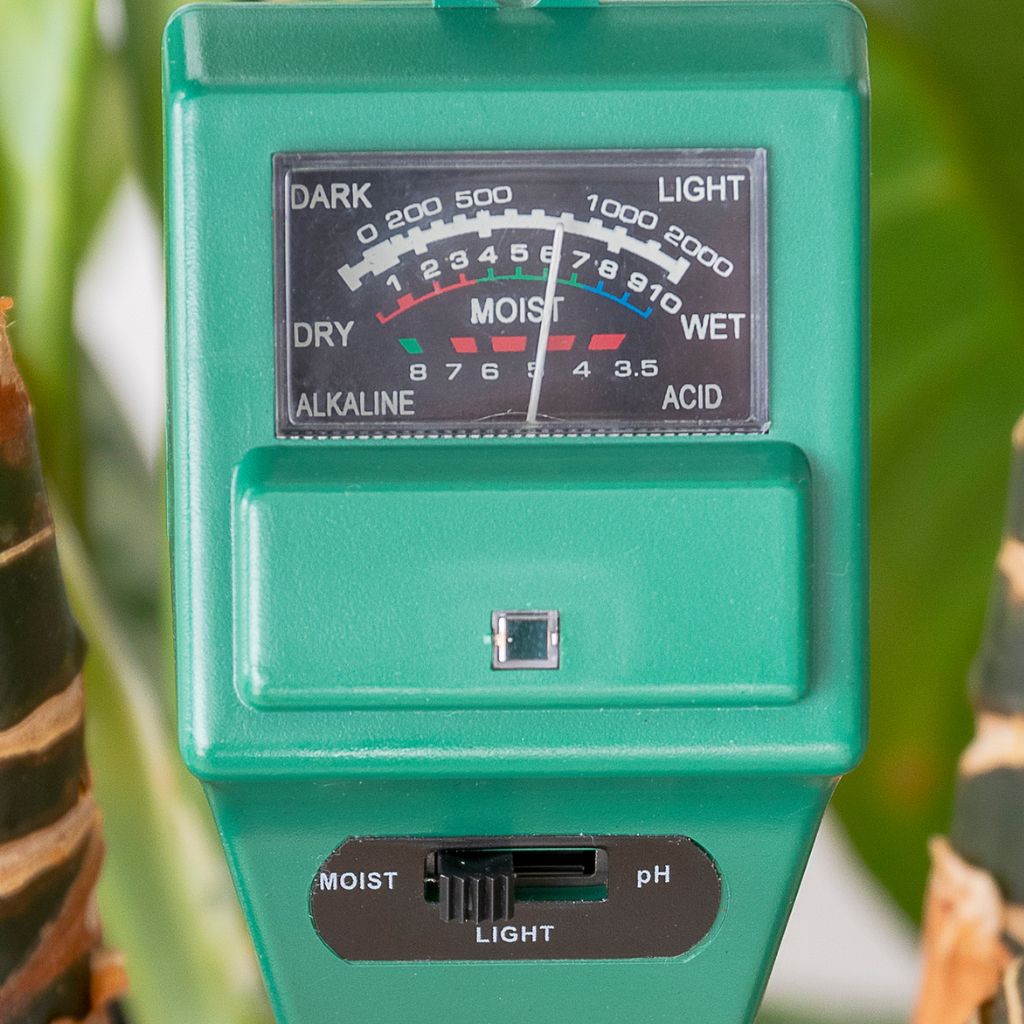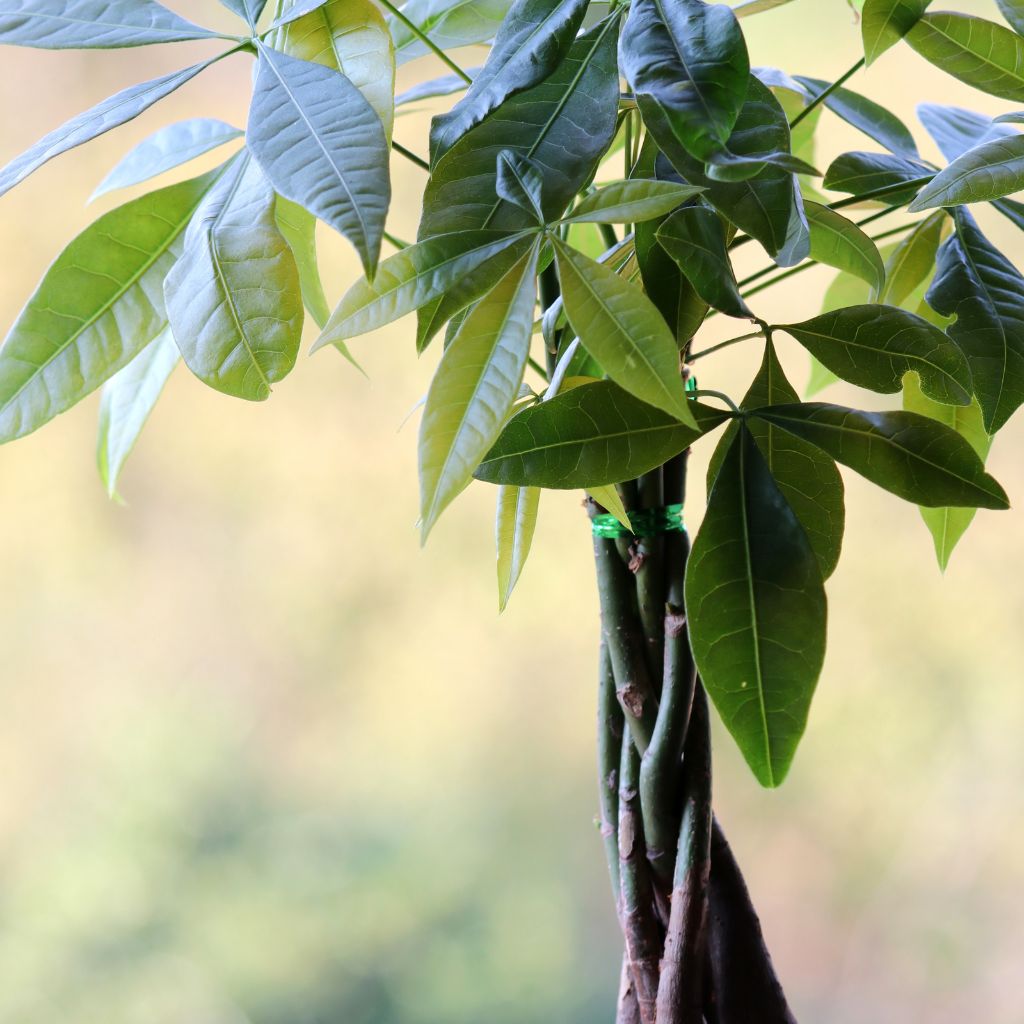Watering a Money Tree is essential to its health and vitality. Consistent watering practices can lead to lush, green leaves and a thriving plant.
Understanding how to gauge when to water and how much is key to preventing over or under-watering, both of which can harm the plant.
Many plant owners often hesitate, unsure of the ideal watering routine. It’s important for them to know that Money Trees prefer to dry out slightly between waterings.
By using simple strategies, anyone can keep their plant happy and healthy, ensuring it thrives in its environment.
Curious about the best ways to water a Money Tree? The tips shared will help nurture this popular houseplant and encourage new growth, providing the care it deserves.
What You Need to Know About the Money Tree
The Money Tree, known for its distinctive appearance and cultural significance, has garnered attention as a popular houseplant. This section explores its origins, significance, and unique physical features.
Origin and Significance
The Money Tree, or Pachira aquatica, is native to Central and South America. It thrives in swampy areas, showcasing its adaptability to various environments.
In many cultures, particularly in Feng Shui, it symbolizes good luck and prosperity. The plant’s braided trunk is believed to enhance positive energy and wealth circulation.
Traditionally, it represents a harmonious balance of nature and prosperity, making it a favorite gift for new businesses or special occasions.
Physical Characteristics
The Money Tree features large, palmate leaves that can reach up to 12 inches in length. These bright green leaves grow in clusters, giving the plant a lush appearance.
The braided trunk, often seen in commercially sold plants, is aesthetically pleasing and becomes a focal point of decor. This species can grow up to 60 feet in its natural habitat but generally stays much smaller indoors.
Its smooth bark and greenish hue add to its visual appeal. The Money Tree also produces creamy-white flowers and edible seeds in its natural environment, although flowering is rare in indoor settings.
Fundamentals of Watering a Money Tree
Proper watering is essential for maintaining a healthy money tree. Key factors include understanding the plant’s specific water requirements, identifying the best times to water, and recognizing soil moisture levels.
Water Requirements
A money tree needs a moderate amount of water. It’s important to soak the soil thoroughly and allow excess water to drain. This ensures deep root hydration while preventing rot.
During the growing season, typically spring and summer, regular watering is ideal. Watering should be done when the top inch of soil feels dry to the touch. In fall and winter, the frequency can be reduced.
Signs of needing water include wilting leaves or dry soil. Conversely, yellowing leaves or mushy stems may indicate overwatering.
Best Time to Water
The best time to water a money tree is in the morning. This timing allows the moisture to reach the roots before the heat of the day causes evaporation.
Watering in the evening can lead to excess moisture overnight, which increases the risk of root rot. It’s beneficial to establish a consistent schedule based on the plant’s environment and season.
If the money tree is indoors, consider the humidity levels in the room. A drier atmosphere may necessitate more frequent watering while maintaining good drainage.
Understanding Soil Moisture
Soil moisture is crucial for determining when to water. Money trees thrive in well-draining soil; it should retain some moisture but not remain soggy.
Using a moisture meter can provide an accurate reading of the soil’s current state. Alternatively, checking the soil with your finger can be effective.
A pot with drainage holes can prevent excess water buildup. This setup helps the tree absorb just the right amount of water, supporting healthy growth and preventing problems.
Methodologies for Watering
Proper watering techniques are essential for maintaining a healthy money tree. Understanding the two primary methods can help ensure optimal hydration and growth.
Top Watering Technique
Top watering involves applying water directly to the soil surface. This method is intuitive and straightforward, making it a popular choice among plant owners.
To execute this method effectively:
Water Quantity: Use enough water until it drains out of the bottom holes. This ensures that deep roots receive moisture.
Frequency: Water when the top inch of soil feels dry. This prevents overwatering, which can lead to root rot.
Water Quality: It’s best to use room temperature distilled or rainwater to avoid chemicals that may harm the plant.
This technique allows for easy observation of the soil’s moisture level and promotes healthy root development.
Bottom Watering Approach
Bottom watering is another effective technique that promotes even moisture distribution. This method involves placing the plant pot in a tray or basin filled with water.
Key steps to consider include:
Preparation: Fill a tray or basin with water and place the potted money tree in it. Allow the plant to soak for about 30 minutes.
Moisture Absorption: The soil will wick up moisture through the drainage holes, ensuring that the roots absorb water evenly.
Frequency: Similar to top watering, check the soil moisture before repeating. This can help prevent overwatering.
This technique is particularly useful for individuals who tend to overwater, as it allows the plant to take in water as needed.
Water Quality and Your Money Tree
Water quality plays a significant role in the health of a Money Tree. The type of water used and the implications of tap water can greatly affect its growth and vitality.
Type of Water to Use
Money Trees thrive best with clean and filtered water. Distilled water or rainwater is ideal, as they lack chemicals often found in tap water. These types of water help prevent mineral buildup in the soil, promoting healthier root systems.
Using filtered water can remove chlorine and other impurities. This creates a more balanced environment for the Money Tree. If distilled or rainwater is unavailable, letting tap water sit out for 24 hours can help dissipate chlorine, making it safer for watering.
Effects of Tap Water
Tap water may contain chlorine, fluoride, and other additives that can be harmful to plants. Chlorine can inhibit root growth, leading to yellowing leaves and stunted development.
Fluoride, present in most municipal water supplies, can also negatively affect the Money Tree. It’s essential to monitor the plant closely if using tap water.
If the leaves start to brown or curl, it may indicate water quality issues. Choosing high-quality water can help the Money Tree flourish and thrive.
Navigating Common Watering Issues
Watering a Money Tree can lead to specific issues if not monitored correctly. Recognizing the signs of too much or too little water ensures a healthy plant.
Overwatering Symptoms
Overwatering can quickly harm a Money Tree. Key symptoms include yellowing leaves and a mushy trunk. Leaves may also develop brown spots or drop off entirely.
Look for a wet, soggy surface in the soil. This indicates excess moisture. If the roots remain submerged, root rot may occur.
Signs of overwatering include:
- Soft, discolored leaves
- Soil that remains soggy
- Foul odor from the soil
You should use a moisture meter or check the soil’s top inch with his finger. If it feels damp, it’s best to hold off on watering.
Underwatering Signs
Underwatering can cause stress and stunted growth. Signs include wilting leaves and dry soil. The leaves may turn crispy and brown, especially at the edges.
The plant might grow slower than usual. You should look for drooping leaves, which often means it needs hydration.
Indicators of underwatering include:
- Wilting appearance
- Dry, crumbly soil
- Brown leaf edges
To assess moisture, you can check the bottom of the pot. If it feels dry, it’s time to water.
How to Fix Watering Problems
To address overwatering, you must allow the soil to dry out completely before resuming a regular watering schedule. You might consider repotting if root rot is suspected, cutting away damaged roots.
For underwatering, it’s essential to thoroughly soak the soil until water drains from the bottom. You can create a consistent watering routine based on the plant’s environment.
Watering Tips:
- Always check soil moisture before watering
- Adjust frequency based on season and humidity
- Use pots with drainage holes to prevent water accumulation
By managing these common issues, you can ensure a healthy Money Tree.
Seasonal Watering Adjustments
Adjusting a money tree’s watering routine according to the seasons is essential for its health. During warmer months, the plant has higher water needs, while it requires less hydration in the colder months.
Summer Watering Schedule
In summer, money trees thrive with increased light and warmth. This is the time to water more frequently.
- Frequency: Water every 1-2 weeks.
- Check Soil: Ensure the top inch of soil is dry before watering.
- Amount: Provide enough water until it drains from the bottom, promoting deep root growth.
During hot, dry periods, humidity levels may drop. A humidifier or pebble tray can help maintain moisture without overwatering.
Winter Watering Strategy
In winter, money trees enter a dormant phase. Watering needs dramatically decrease.
- Frequency: Water every 3-4 weeks.
- Check Soil: The soil should be thoroughly dry to about two inches deep before watering.
- Avoid Cold Water: Use room temperature water to prevent shocking the roots.
Monitoring environmental conditions like heating can also help. A consistent watering approach will keep the tree healthy through the winter months.
Advanced Tips for a Thriving Money Tree
To ensure a healthy Money Tree, advanced techniques can significantly enhance its growth and vitality. Implementing self-watering pots and monitoring soil moisture levels with meters provides effective ways to manage watering efficiently.
Use of Self-Watering Pots
Self-watering pots are an excellent choice for the Money Tree. These pots typically feature a reservoir at the bottom that allows for consistent moisture availability.
Benefits of Self-Watering Pots:
- Reduced Risk of Overwatering: Since water is absorbed from the reservoir, the risk of overwatering decreases.
- Less Frequent Watering: Depending on the humidity levels, these pots can allow watering only every few weeks.
When selecting self-watering pots, ensure they have proper drainage holes to prevent root rot. Choose a pot that matches the size of the plant for optimal results. It’s important to check the water level regularly and refill the reservoir as needed.
Monitoring with Moisture Meters
Moisture meters provide precise information about the soil’s water content. Using these devices can prevent both underwatering and overwatering, ensuring the plant remains healthy.
Key Features of Moisture Meters:
- Easy-to-Read Scale: Most moisture meters use a straightforward scale, indicating when to water.
- Quick Assessment: A simple insertion into the soil gives immediate feedback on moisture levels.
To use a moisture meter, insert the probe into the soil to the appropriate depth. Wait for the reading to stabilize. Ideally, the soil should remain moist but not soggy.
This helps maintain the right balance for the Money Tree’s health. Regular monitoring allows for timely adjustments, promoting a thriving environment.
Long-term Watering Practices
Maintaining a consistent watering routine is essential for the health of a money tree. Regular check-ups and adjustments to care can lead to lush growth and vitality.
Routine Check-ups
Regularly inspecting the money tree’s soil is fundamental. A simple poke into the top inch can indicate moisture levels. If it feels dry, it’s time to water; if it’s still damp, wait a few days.
Water deeply, ensuring that excess drains out of the pot’s bottom. This encourages deep root growth and prevents standing water, which can lead to root rot.
Frequency can vary based on factors like the season and humidity. During warmer months, checking once a week is advisable, while in cooler months, extending to every two weeks may suffice.
Adapting to Environmental Changes
Changes in the environment can affect how often a money tree requires water. For example, moving it near a heat source or during a season change will alter water needs.
Increased temperature or dry air may necessitate more frequent watering. Regularly assessing the plant’s condition helps in adjusting the care routine accordingly.
It’s also helpful to observe the leaves; yellowing or wilting may indicate overwatering or underwatering, prompting immediate action. Keeping an eye on these indicators fosters a vibrant and healthy plant.
